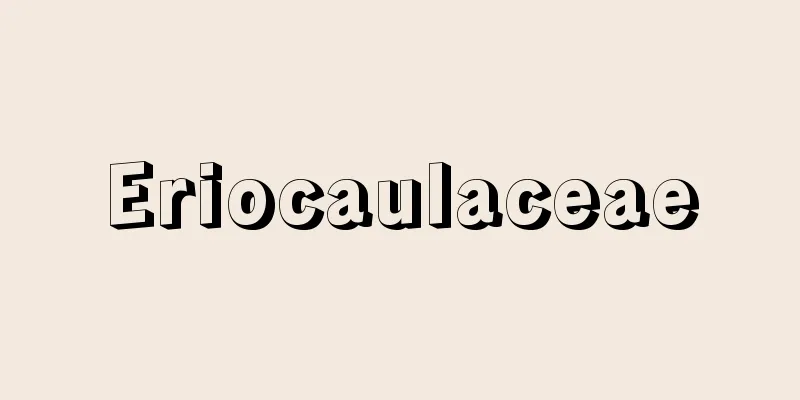Ikuno Mine

|
This mine was located in Asago City, central Hyogo Prefecture. The deposits are fissure-filled deposits that were formed after the late Mesozoic era when rhyolite erupted and filled up, and are roughly divided into three deposit groups, Kanagase, Tasei, and Aokusa, with over 60 veins of various sizes. The mines are miscellaneous ores, mainly consisting of four types of minerals: copper, lead, zinc, and tin, with gold and silver being recovered during the copper and lead ore-dressing process. The discovery of silver ore is said to have occurred in 807 (Daido 2), and it is mentioned in the Engishiki, but there is no definite proof. According to the Ginzan Kyuki, which was compiled in the mid-Edo period, "silver ore was first mined" in 1542 (Tenbun 11), and the feudal lord Yamana Suketoyo took direct control of the mine, and a mining town emerged. Oda Nobunaga and Toyotomi Hideyoshi, who destroyed the Yamana clan, also put the mine under their direct control, and the Tokugawa Shogunate also established a magistrate's office in 1716 (Kyoho 1) and actively mined the area. The 1620s are said to have been the peak of the silver mine, with veins discovered in Kanakase, Shirakuchi, and Aokusa, and it is said that about 150 kan (560 kilograms) of silver was produced per month. Refined silver (cupellation silver) was sent overland to Osaka Castle via Himeji. Although it went through periods of prosperity and decline after that, it was a mine that supported the financial resources of the Tokugawa Shogunate along with the gold mines of Sado. The Meiji government made it a government-run mine, invited French engineers to improve the facilities, and expanded the business by building a carriage road to Himeji for transportation. It was temporarily incorporated into the Imperial family's property, but in 1896 (Meiji 29), it was sold to Mitsubishi Limited Partnership Company. It operated during the Taisho and Showa periods, and after World War II it became the Mitsubishi Mining Ikuno Mine, but closed in 1973 (Showa 48) due to the depletion of ore reserves and cadmium pollution issues. Today, Silver Ikuno has been established with the aim of developing the mining facilities into a tourist destination, and the Ikuno Silver Mine has been revived as a historic site. The Kanakase Pit has been renovated and is now a tourist tunnel, and the Ikuno Mining Culture Museum stores and exhibits mineral specimens. There is also the Fukiya Museum. In 2007 (Heisei 19), the site was designated one of the Modern Industrial Heritage Sites by the Ministry of Economy, Trade and Industry. [Mamoru Otsuki January 19, 2017] "Ishikawa Junkichi, 'Ikuno Silver Mine and the Ikuno Magistrate' (1974, Administrative Historical Materials Publishing Association)" ▽ "'Outline of the History of Ikuno Silver Mine' (1981, Silver Ikuno)" [Reference item] |Ikuno Silver Mine. Ikuno-cho, Asago-gun, Hyogo Prefecture (present-day Asago City). Photo Collection of Famous Places and Historic Sites of Japan, Kinki Region (1918, Taisho 7), National Diet Library . Ikuno Mine (Taisho period) Entrance to the Kanakase mine. Asago City, Hyogo Prefecture ©Asago City "> Ikuno Mine Source: Shogakukan Encyclopedia Nipponica About Encyclopedia Nipponica Information | Legend |
|
兵庫県中央部、朝来市(あさごし)にあった鉱山。鉱床は、中生代後期以後に流紋岩が噴出、充填(じゅうてん)した裂罅(れっか)充填鉱床で、金香瀬(かながせ)、太盛(たせい)、青草の3鉱床群に大別され、大小60余の鉱脈が分布する。雑種鉱で、銅、鉛、亜鉛、錫(すず)の4種を主とし、金銀は銅、鉛の選鉱過程で回収された。銀鉱の発見は807年(大同2)といい、『延喜式(えんぎしき)』にもみえるが確証はない。江戸中期成立の『銀山旧記』によると、1542年(天文11)に「銀石初めて掘出」とあり、領主山名祐豊(やまなすけとよ)が直接経営に乗り出し、鉱山町が出現した。山名氏を滅ぼした織田信長、豊臣(とよとみ)秀吉も直轄鉱山とし、徳川幕府もまた1716年(享保1)に代官所を置いて盛んに採掘した。1620年代が銀山極盛期といわれ、金香瀬、白口(しらくち)、青草各方面で鉱脈が発見され、1か月に銀約150貫(560キログラム)を出鉱したといわれる。精錬した銀(灰吹(はいふき)銀)は陸路、姫路(ひめじ)を経て大坂城へ送り込まれた。その後盛衰はあったが、佐渡の金山とともに徳川幕府の財源を支える鉱山であった。明治政府は官営鉱山とし、フランス人技師を招いて設備を改良し、輸送のため姫路まで馬車道を通して事業を拡張した。一時皇室財産に編入されたが、1896年(明治29)に三菱(みつびし)合資会社に払い下げた。大正、昭和と稼働し、第二次世界大戦後は三菱鉱業生野鉱業所であったが、鉱量の枯渇とカドミウム公害問題から1973年(昭和48)閉山した。現在は、鉱山施設の観光開発を目的にシルバー生野が設立され、史跡生野銀山としてよみがえっている。金香瀬坑が整備され観光坑道となり、生野鉱山文化ミュージアムでは鉱物標本を収蔵、展示している。吹屋(ふきや)資料館もある。2007年(平成19)には経済産業省より近代化産業遺産の一つとして認定された。 [大槻 守 2017年1月19日] 『石川準吉著『生野銀山と生野代官』(1974・行政史料刊行会)』▽『『生野銀山史の概説』(1981・シルバー生野)』 [参照項目] |生野銀山。兵庫県朝来郡生野町(現在の朝来市)。『日本名勝旧蹟産業写真集 近畿地方之部』(1918年〈大正7〉)国立国会図書館所蔵"> 生野鉱山(大正時代) 金香瀬坑入口。兵庫県朝来市©朝来市"> 生野鉱山 出典 小学館 日本大百科全書(ニッポニカ)日本大百科全書(ニッポニカ)について 情報 | 凡例 |
<<: Ikuno Magistrate - Ikuno Magistrate
Recommend
roux blond (English spelling) rouxblond
… There are two types of binders that thicken sau...
Extrusion (machine) - Oshidashi
…the process of placing a material in a container...
Indianapolis 500 Mile Race
⇒Indy 500 Source: About Shogakukan Digital Daijise...
Blood concentration -
The concentration of a substance dissolved in bloo...
Maser
A device that amplifies and oscillates microwaves ...
Lightning Cover
...The world is Fuwa Nagoya, and it involves Gonp...
Saca, Antonio
Born March 9, 1965. Usulutan. Salvadoran politicia...
Gehyra mutilata (English spelling) Gehyramutilata
...They lay eggs once or twice a year, two at a t...
Public property - Koubutsu
It refers to individual tangible objects that are...
Emden Conference - Emden Conference
A conference of the Reformed Church held in Emden ...
Somoza García, A. (English spelling) SomozaGarciaA
...a family that wielded great power in Nicaragua...
Alcelaphinae
...There are 11 species in 3 genera, including th...
Entsu Daio Kokushi - Entsu Daio Kokushi
…In 1307 (Tokuji 2), he moved to Kamakura at the ...
Melfi Law Code (English: Constitutioni di Melfi)
A collection of royal laws for the Kingdom of Sici...
Gospel according to Thomas
The Gospels of the New Testament Apocrypha, found ...









